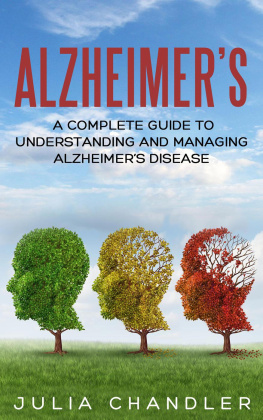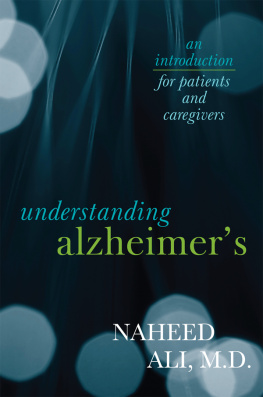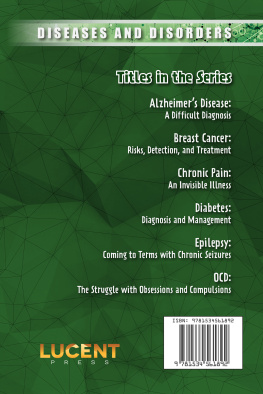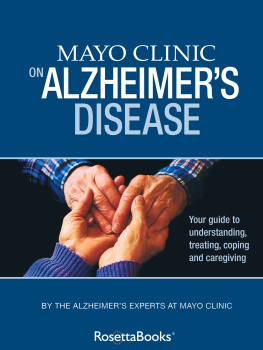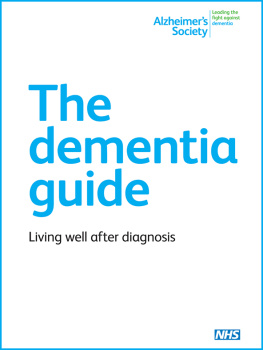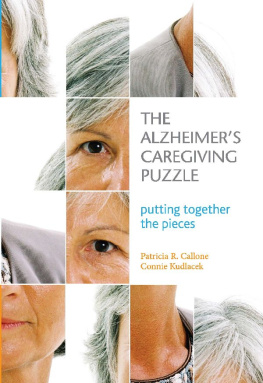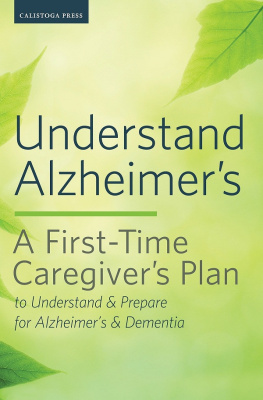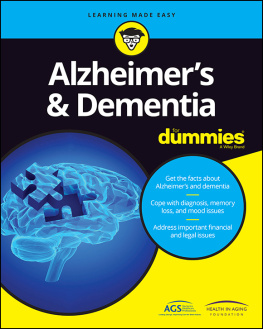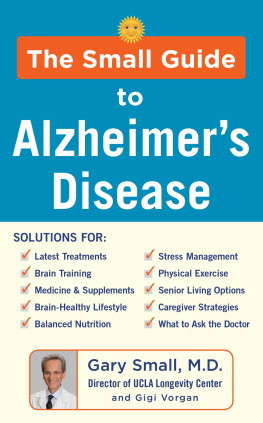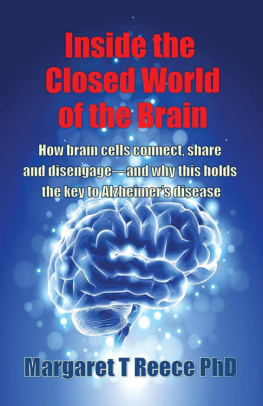Alzheimers
A Complete Guide to Understanding and Managing Alzheimers Disease
Julia Chandler
Text Copyright 2021 by Julia Chandler - All rights reserved.
This document is geared towards providing exact and reliable information in regards to the topic and issue covered. The publication is sold with the idea that the publisher is not required to render accounting, officially permitted, or otherwise, qualified services. If advice is necessary, legal, or professional, a practiced individual in the profession should be ordered.
From a Declaration of Principles which was accepted and approved equally by a Committee of the American Bar Association and a Committee of Publishers and Associations.
In no way is it legal to reproduce, duplicate, or transmit any part of this document in either electronic means or in printed format. Recording of this publication is strictly prohibited and any storage of this document is not allowed unless with written permission from the publisher. All rights reserved.
The information provided herein is stated to be truthful and consistent, in that any liability, in terms of inattention or otherwise, by any usage or abuse of any policies, processes, or directions contained within is the solitary and utter responsibility of the recipient reader. Under no circumstances will any legal responsibility or blame be held against the publisher for any reparation, damages, or monetary loss due to the information herein, either directly or indirectly.
Respective authors own all copyrights not held by the publisher.
The information herein is offered for informational purposes solely, and is universal as so. The presentation of the information is without contract or any type of guarantee assurance.
The trademarks that are used are without any consent, and the publication of the trademark is without permission or backing by the trademark owner. All trademarks and brands within this book are for clarifying purposes only and are owned by the owners themselves, not affiliated with this document.
Table of Contents
A ffecting more than 5 million Americans over the age of 65, Alzheimer's disease is the most common form of dementia. This condition attacks the brain, and it steadily and progressively reduces the brains ability to remember recent events and perform simple activities. Alzheimer's is degenerative, has no cure, and it eventually leads to death.
Alzheimer's is not a normal part of the aging process, and so, it does not affect every older person. Furthermore, its signs and symptoms are far more devastating than occasionally misplacing keys or forgetting the name of a new neighbor. Ongoing research into Alzheimer's seems to indicate a hereditary component, but definitive answers to the complexities of the condition remain to be discovered.
Individuals coping with Alzheimer's, and their caregivers, need a network of support and a guide to help them live their daily lives. The content of this book provides ideas and suggestions for all concerned at every stage of this difficult disease. For instance, what happens before and after diagnosis of Alzheimer's? What should the care plan look like? And, probably one of the most important issues: is a caregiver in place?
In this comprehensive guide, each chapter addresses a specific and important issue.
Chapter 1 outlines the basics regarding dementia and Alzheimer's.
Chapter 2 addresses the specific signs and symptoms of the condition.
Chapter 3 discusses the diagnosis of Alzheimer's.
Chapter 4 introduces the reader about the stages of Alzheimer's.
Chapter 5 presents information on treatment options currently available.
Chapter 6 contains considerations about diet and nutritional.
Chapters 7, 8, and 9 delve deeply into the implementation of comprehensive care plans appropriate for each stage of the disease: early, middle, and late.
This guide has a dual purpose: Firstly, it will help people with Alzheimer's live as fully as possible; additionally, it will assist the family, friends, and caregivers of the affected individual in working with, caring for, and loving their loved ones on a daily basis.
Chapter 1: Understanding Alzheimers Disease
A lzheimers disease was given its name by Alois Alzheimer, a German neurologist. It is a physical diseasenot a mental or emotional onethat attacks the brain. As the disease progresses, abnormal structures, called tangles and plaques, which are formed by the tau protein and beta-amyloid protein, respectively, start to develop in the brain, slowly killing off brain cells. Alzheimers also causes a reduction of the brain chemicals that are responsible for message transmission within the brain. As the disease progresses, it causes deterioration of a persons memory and communication skills, and it severely affects daily living.
Dementia is a generalized term for memory loss and the loss of several intellectual abilities that can cause serious disruption to daily life.
Alzheimers primarily affects those over the age of 65; although, around 5% of those who suffer have what is known as early- or younger-onset Alzheimers. This mostly affects people who are in their 40s and 50s.
Alzheimers gets worse over time. It is progressive, and the symptoms tend to worsen on a gradual basis. Memory loss starts out as mild, but by the later stages, most sufferers cannot hold a conversation and are often not aware of where they are.
Alzheimers is the sixth leading cause of death in the US. Once the symptoms become noticeable, sufferers tend to live approximately 8 years, though they can live up to 20 more years. Age and other health conditions affect the progression of the disease.
There is currently no cure, but research is continuing. We are now at a point where treatment can temporarily slow the worst symptoms and quality of life can be improved for both the sufferer and their caregiver. Research continues into finding causes of the disease, how it can be treated, and how it can be prevented.
Next page
